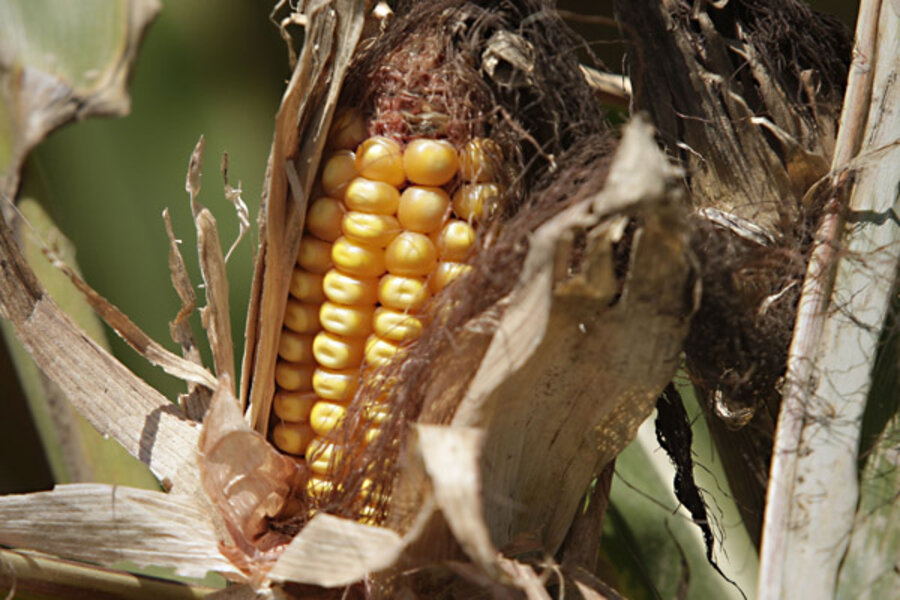Why we're paying more for corn
Prices are increasing for land in the corn belt:
Land values are uniformly rising throughout the Corn Belt and the Great Plains, thanks to farmers being the primary buyers and to the value of commodities. Higher prices for grain have spurred the most significant demand for land since the 1970’s.
These price increases will work their way into the cost of food for consumers, and let’s not forget that corn (among other crops grown in the corn belt) is a subsidized crop, so taxpayers get to pay for the corn twice.
As mentioned by one farmer in the film King Corn, “I don’t know a single farm out here that isn’t in a government program.”
The profitability of farm land may also be linked to the proliferation of genetically-modified crops in recent years. In addition to corn, the linked article also notes that much of the land may be used for soybeans. There is nothing free-market about soybeans either since soybeans are another case of a type of government subsidy being used to enhance private profits (soybeans are also directly subsidized). In this case, the subsidy takes the form of a government-granted monopoly known as a patent. This patent is on the soybean genes themselves, since these genes are from herbicide-resistant soybeans. (Most corn/maize also is also genetically-modified (GM) and patented.)
The patenting of crops in turn leads to less innovation in crop varieties and in consumer choice since the owners of genes can prosecute any farmer who plants varieties of non-GM crops that may have been unintentionally crossed with GM crops via wind. Farmers who have the bad luck of owning farms downwind are then likely to be sued by the the owners of the patents should the downwind farmer attempt to harvest seeds from his own crops.
This use of monopoly power to crush the planters of other varieties of corn and soybeans constitutes a third way that government intervention leads to consumers paying extra for food. This time, the extra payment is in the form of fewer choices in food.
This isn’t an attack on GM food, mind you, which may have many benefits. However, the growth of government monopoly power over all varieties of GM crops and over crops that even happen to be planted near GM crops (which is most crops) has led to a severe retardation in innovation and the use and development of other varieties of these crops everywhere.
In the developing world, however, Reuters reports that GM crops are booming, and it is hard to begrudge the residents of poorer countries their desire to grow food that is less likely to spoil or fall victim to disease. On the other hand, one cannot know the long term effects of government monopoly on the future of innovation in agriculture in the absence of a free market in planting and development of new crops.
On the other end of the spectrum is Europe, where most GM crops are simply banned. This is just another type of tax on consumers, although Europe is notorious for meddling in even the tiniest aspects of agriculture, so who can be the least bit surprised?
A recent Reuters story notes that the bans on GM crops will likely continue well into the future, although they have approved one variety of maize controlled by Monsanto via its monopoly on the patented gene. But otherwise, any consumer who actually wants these goods is simply out of luck.
So, while farmland is now profitable, the taxpayer and consumer is certainly paying his fair share. He pays in his tax dollars, and he pays for the government monopolies (known as patents) which in turn diminish his choices of crops via government intervention. And, he pays more for food through price inflation. The feds point to the CPI and claim that prices increases are mild, but even the CPI shows food price increases at 3.5 percent to 4 percent over the past year, and this is well above income growth for the same period. If food prices are growing faster than income, that’s not the kind of “stability” that leads to wealth creation. Of course, As the New York Fed has informed us: Who needs food when you can just buy an iPad?






